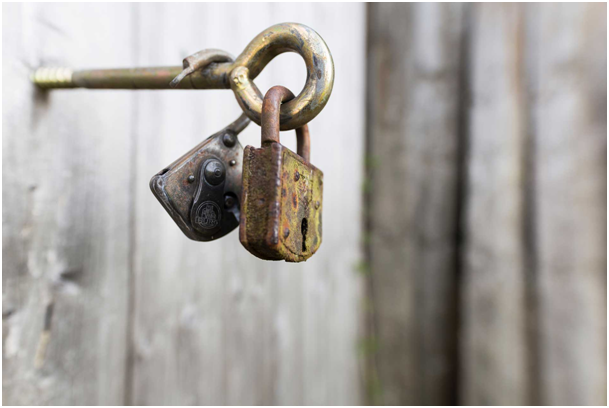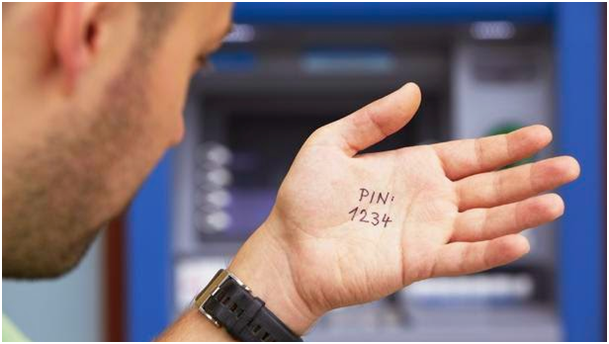
We all love the Internet. How could we not? It lets us watch movies, meet new people, play games, etc. It’s a fun place and it even makes it possible for people to earn their living!
To keep everything in order though, we all need our personal or professional accounts for anything ranging from teen forums to PayPal. Creating and running an account naturally, requires a password. How else would it be truly yours?
With each year, running a safe and bulletproof account has become harder and at the same time, as important as ever. Cyber security is something everyone must now consider. Just try and remember the Sony that shocked the world a few years ago.
Contents
Common password management mistakes
We humans make mistakes, all sorts of mistakes. Our passwords and the way we create them are also not perfect and without even realizing most of us still make silly mistakes when thinking of a password. Let’s go through some of those mistakes:
Using the same password for each account
This one is a classic. We all have been there, especially in the early days of the internet. We know this is extremely unsafe but are too lazy or just don’t care enough to do anything about it.
The bad thing is, once an attacker hits an account of a person who has made this mistake, it’s going to be hard to recover. Phishing emails are the most common way to attack you and studies show that around 30% of all phishing emails get opened.
Changing a single letter in passwords
Another rookie mistake is changing just a single letter every time you open a new account. What’s worse is that people usually change an obvious character, for example – ”BeatlesAreTheBest” to ”BeatlesAreTheBest1”. If you do this you expose yourself to quite a bit of unwanted troubles.
Swapping letters for numbers
This sort of mistake falls under the same category as the previous 2. Many people believe that changing their password from «OhMyGod12678” to ”0hMyg0d12678” will make potential attackers’ task to break their passwords impossible.
They are wrong. The fact that you changed ”O” with ”0” is nothing won’t expect.
Predictive keystroke patterns
This one is not such a rookie mistake as many people do it subconsciously. You may never actually know you’ve only used letters located close to each other on the keyboard if you don’t sit down and think about it.
So next time you sit down and create a random and safe password, try not to end up with something like ”ol>0p:?090” and try to use the other half of the keyboard too.
How to generate safe passwords
Around the software boom happening nowadays, naturally each of us is likely to have more and more accounts to their name. This means thinking of a new, different and safe password becomes an extra bit more difficult. So here are some tips on how to generate safe passwords and remember them.

Use a random and safe password generator
There are plenty of free password generators on the web. It simply gives you a totally random mix of characters of all sorts – upper/lower case, numbers, special signs, etc. All you have to do in most cases is set how long the password should be.
The classic ”more than 8 characters long” approach
Usually, whenever you create an account, you see some hints telling you that your password must be at least 8 or more characters long, including an upper case character plus a special character. You can use the above-mentioned password generators for this purpose, but it gets trickier if you actually want to remember your password.
To make it easy to remember, try and think of a sentence you can always remember, for example ”Back in 1984 I used to work for Random Company for 5 years” and only use the first letter of each word and include the numbers – ”Bi1984IutwfRCf5y”. This is a strong password and one that you’ll always be able to recall.
The Passphrase
Something we’ve all thought about is putting together a few random words and we should be safe. This is actually true and backed by many specialists. The length and randomness of the words will make this kind of password quite strong.
However, remember to avoid obvious and commonly used combinations like ”beautiful pink little pig” or ”gorgeous young lady”. These are used together quite often in the real world too and are not considered very strong. Something like ”lighter alligator pony shopping” should keep your account safely locked.
Use a password manager or store your passwords on text or spreadsheets files
Password managers can become your digital guardian angel. Generating, remembering, storing and auto-filling your passwords they are definitely a tool you need to consider using.
If you wish not to use one, there’s always the obvious choice to use a text or spreadsheet file to store your passwords. This is a smart workaround, but keep in mind that anyone who has access to your computer, will have access to your passwords! So try and keep the end document safely stored.
Read Also,
Password Managers: Your new best friends
Password managers are must nowadays because while using one you’ll finally put an end to the typical “password123” that you use to secure your account. They will also generate random, yet strong passwords for you making your life easier.
What’s even better is that you’ll have to only remember one password, the one you use to lock your password manager.
Let’s begin listing your options now.
Dashlane
Let’s start with Dashlane. It’s a free software that makes sure you never forget another password again. It functions both on the desktop and mobile devices, allowing you to access your passwords anytime, anywhere.
Initially, you can download and install Dashlane for free. Allowing it to sync all your data throughout all your devices and networks will cost you around $3 a month. It’s a bargain considering all the functionalities that the app has.
The app does NOT store any password hints or master passwords for security reasons, which gives it somewhat of a competitive advantage over some similar tools.
LastPass
LastPass is one of the most used and well-known password manager & generator app out there. It works across all devices as expected.
LastPass comes with a really neat feature that sets it apart from the others. It automatically audits your passwords and notifies you if it finds duplicates or if they haven’t been changed for a while. This way you’ll be a step closer to being totally safe.
Upgrading to the Premium version of the app will see you pay $1 a month, which is virtually nothing, especially when it comes to your digital security.
KeePassX
KeePassX is a bit different to the other password manager apps. This is an open source option, which is something many people prefer. With the other non-open source options, you are simply left to trust the company providing the software (and we know those can be too!).
It’s a bit trickier when it comes to navigating your way around, but the more tech-savvy among you will know what to do.
KeePassX is compatible with various free password apps, but if you want to sync your passwords across devices, you’ll have to upload an encrypted file containing your passwords to an online storage service such as DropBox for example.
If you are a Mac user, you can use Keychain Access. It comes integrated into the OS and is thus a good free alternative.
However, it does have its limitations and can feel a bit irritating at times. You’ll also have to entrust Apple with all your passwords, which is something many might not like.
Key takeaways/Conclusion
Now you have it, the ins and outs of running well-secured accounts. Nowadays, we have to think about our cybersecurity just as much as we think about our physical one. In some cases, can lead to the worst of experiences you will ever have in your life.
This sure sounds scary, but avoiding the above-listed mistakes, following the tips and gearing up with the right software can make all the difference. It’s up to you what exactly you’ll do and how far you are willing to go to keep your accounts safe. In any case, you have options.

Wow! Great tips. This information will be useful for our website lordofpapers.com